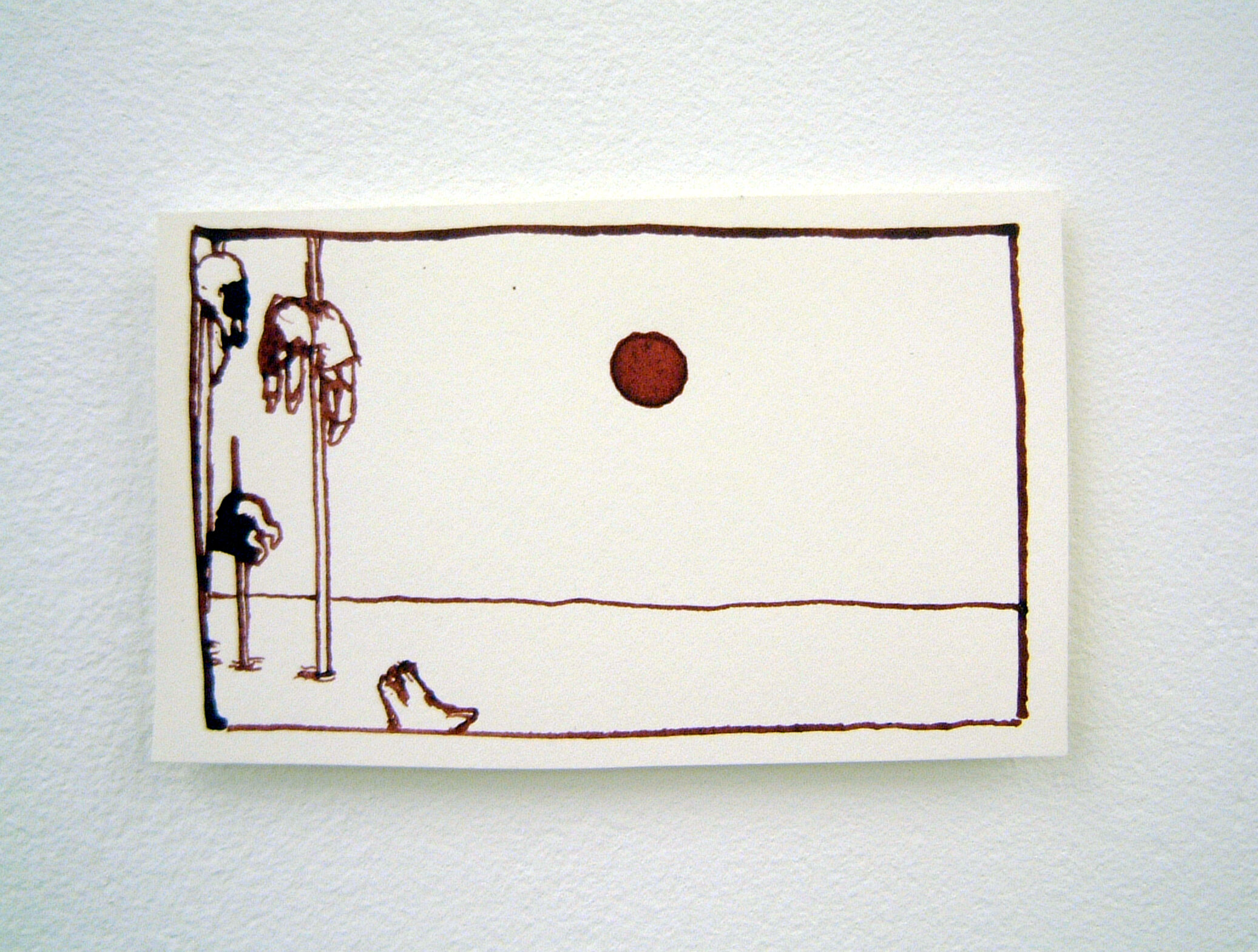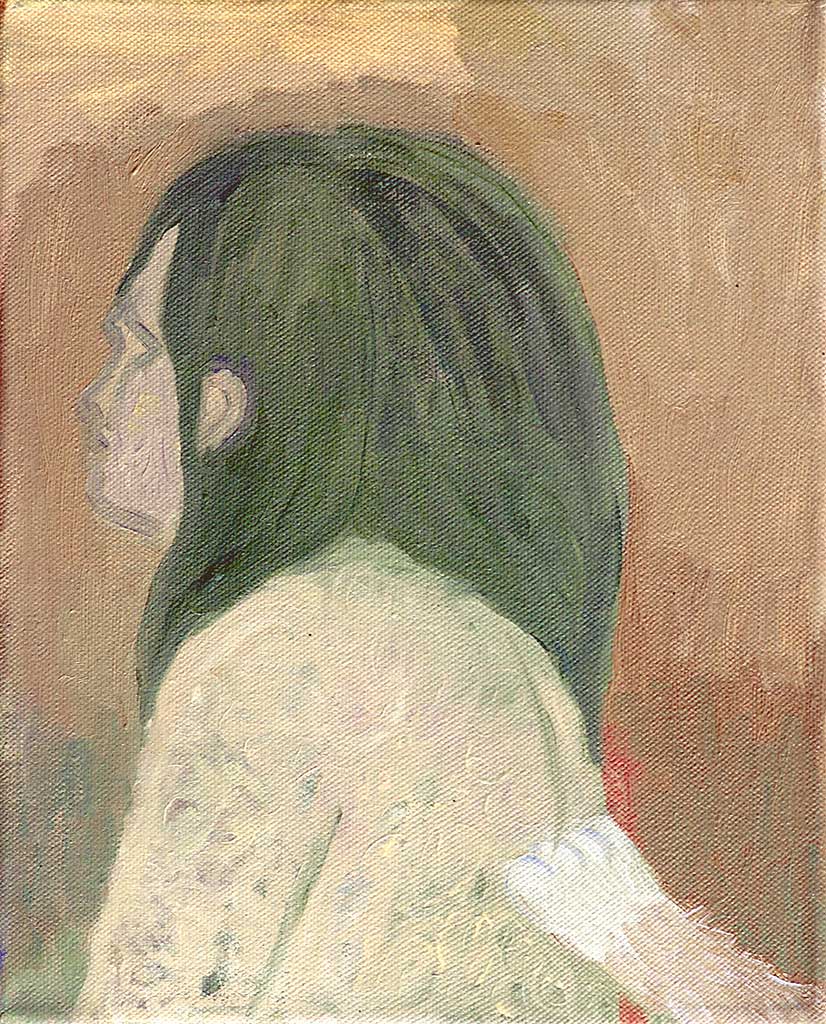Orphan
Paul Becker, Ruth Claxton, Laura Lancaster
18 August – 17 September 2005
‘Orphan’, 2005, installation view. Photo: Colin Davison
‘Orphan’, 2005, installation view. Photo: Colin Davison
‘Orphan’, 2005, installation view. Photo: Colin Davison
‘Orphan’, 2005, installation view. Photo: Colin Davison
‘Orphan’ comprises the work of three artists who deal with depictions of the once removed and the disconnected via representations of people, objects and symbols, all of which in some way disturb established orders – be they psychological, domestic or social.
Paul Becker, After Fuesli, 2005, oil on canvas, 56x88cm. Photo: Colin Davison
Paul Becker’s paintings and drawings explore the extremities of basic human feelings. He employs the inter-relation of humans and animals – one both familiar to us through the archetypal language of children’s stories and illustration and that arouses associated feelings of security and warmth – as a device with which to draw ourselves into an altogether darker, more mysterious environment. Rather than the unambiguous narratives we might expect, we are immersed in scenes of anxiety, eroticism and violence. These scenarios flit between the conscious and unconscious, a feeling that is emphasised by Becker’s stubborn and involved painting process of daubing, scraping and repeated re-working of images or the scratchy mark-making of his drawings. We are abandoned in the land of nightmares where the lingua franca is paranoiac, possibly psychotic, and where the most seemingly innocent image harbours dreadful possibilities.
Ruth Claxton’s recent work consists of an open-ended series of objects and installations titled I thought I was the Audience and then I looked at You (2004-). A series of household ornaments and figurines are presented in a number of deceptively gaudy tableau, crowded together, all ‘looking’ in the same direction but with their senses simultaneously baffled by a series of lovingly crafted masks/mutilations, ‘isolating balls of suffocating prettiness’, of sequins, ribbons, shells, pomanders, feathers and other mundane materials. As the viewer walks around the work they become both a part of the audience and the object of their gaze. Claxton began using ornaments because they are ‘a kind of everyday sculptural object’, generalised versions of their subjects that signify an aspirational desire to be ‘a more romantic, somewhere else’.
‘Orphan’, 2005, installation view. Photo: Colin Davison
‘Orphan’, 2005, installation view. Photo: Colin Davison
Laura Lancaster’s paintings use as their source material anonymous snapshots found in flea markets, junk shops and, more recently, via the internet. She rescues these abandoned images, severed from their original emotional context and rehabilitates them back into the present. Lancaster’s practice is very much process led, with the focus being the manipulation of the paint itself, the tension engineered between the paint as a tangible substance, and the illusion thus created – the process begins with nothing and stops when there is just enough information. Details are obscured or omitted, clues to actual periods in history are concealed. Though they elicit a definite sense of melancholia, the images are divorced from their origins, refuting any accusation of nostalgia. Rather than ‘fixing’ a moment, they become open-ended and we are compelled to interpret them according to our own experience.
Take a video tour of the exhibition
Share this page
















